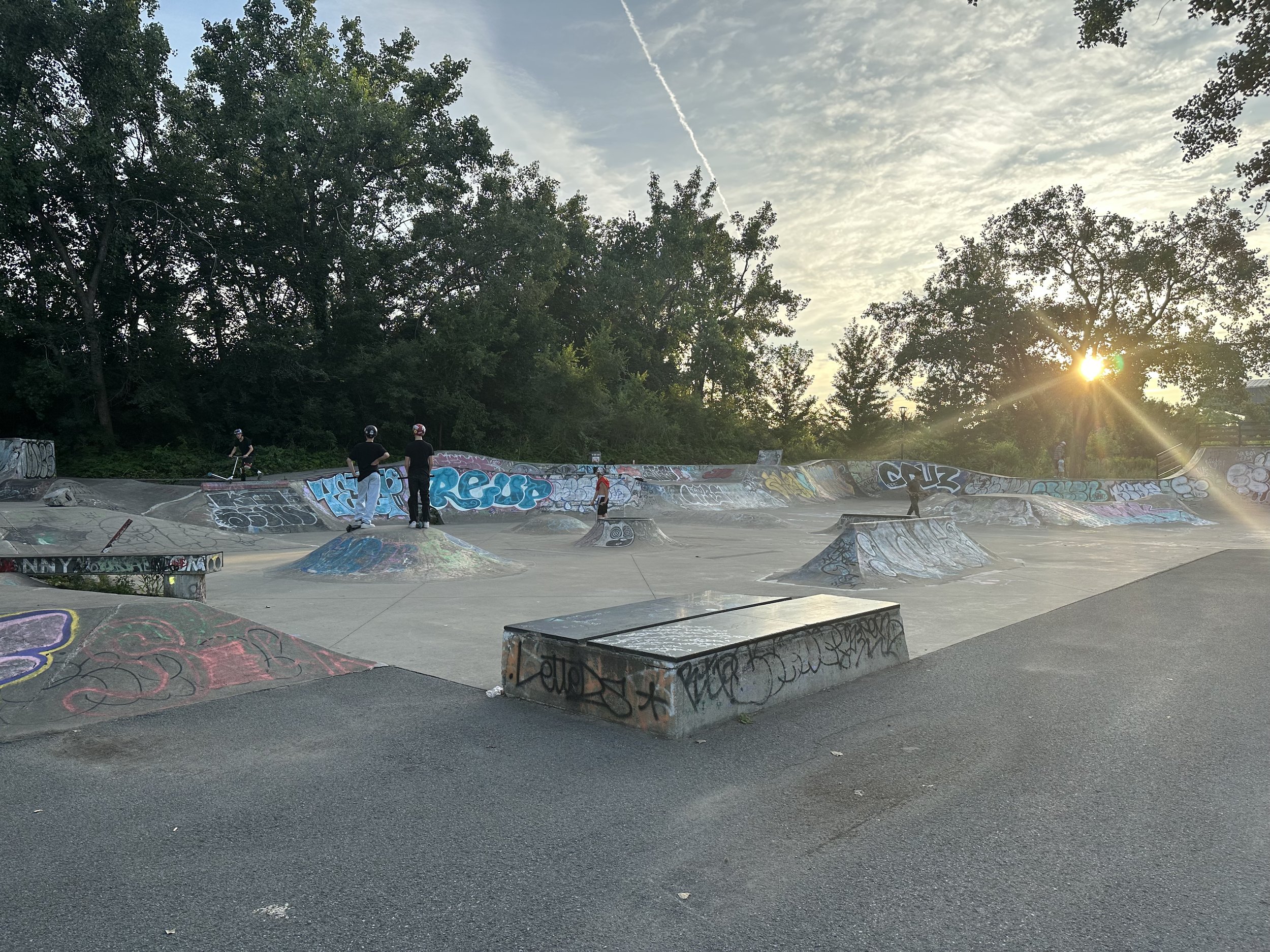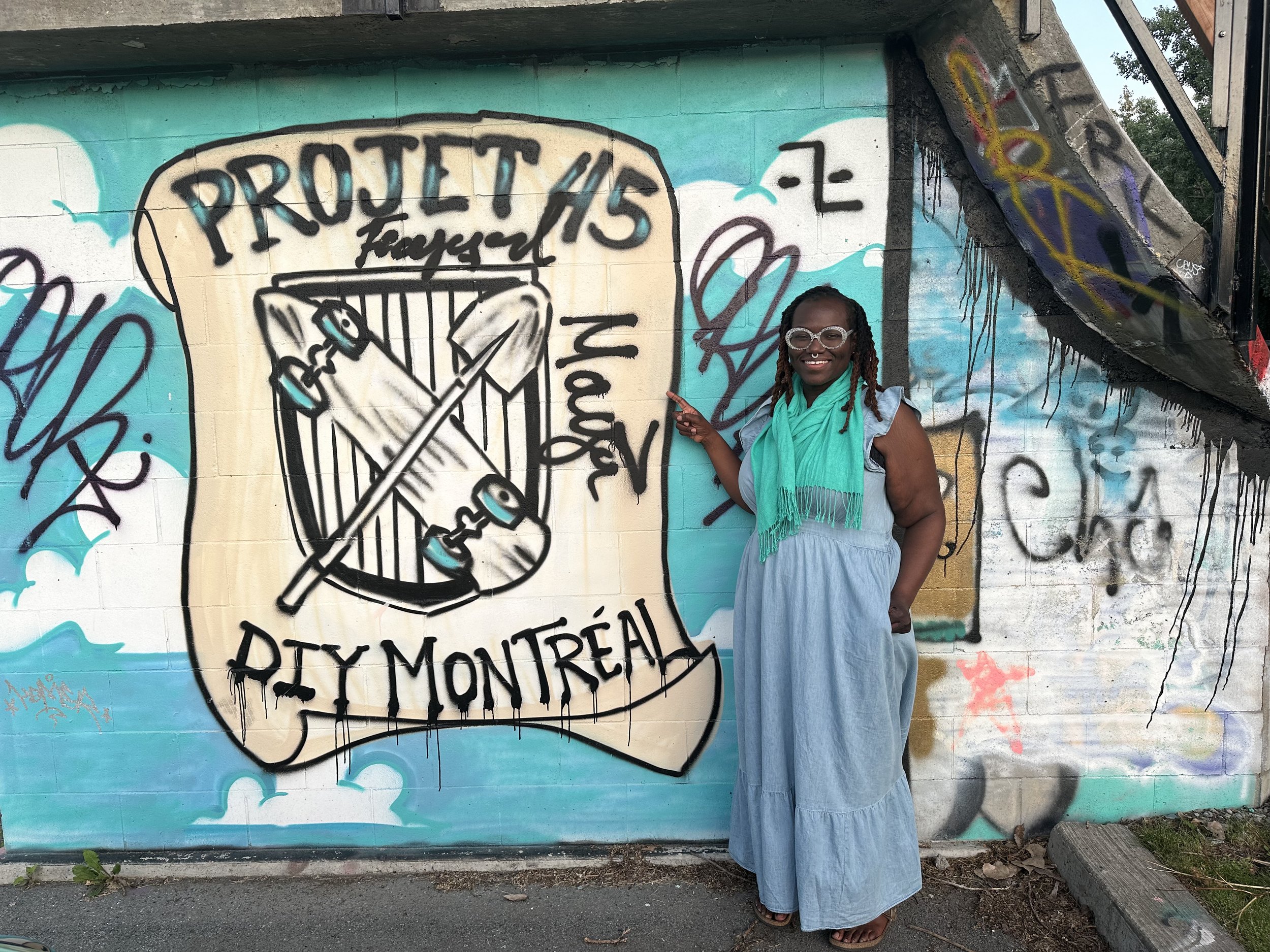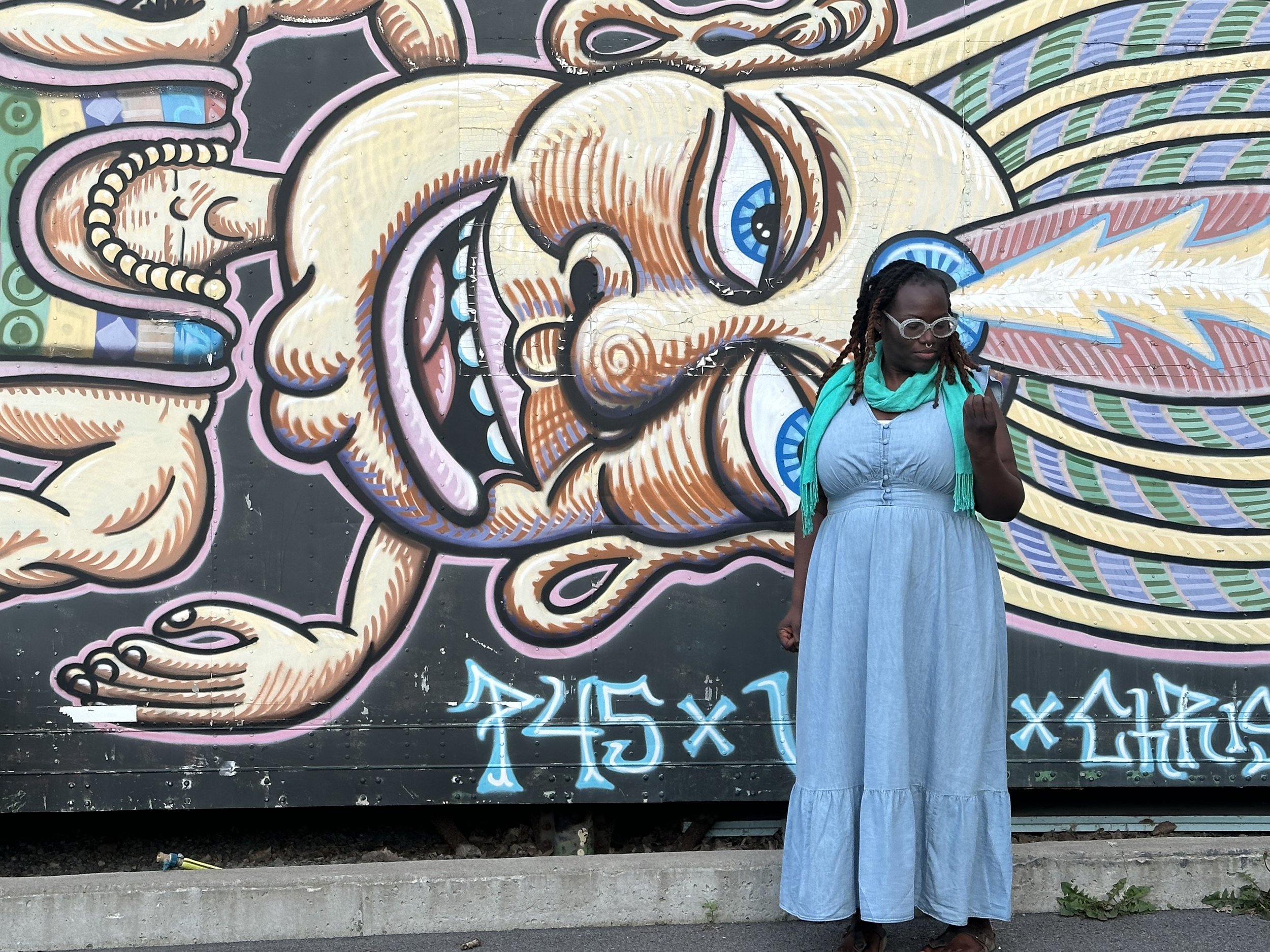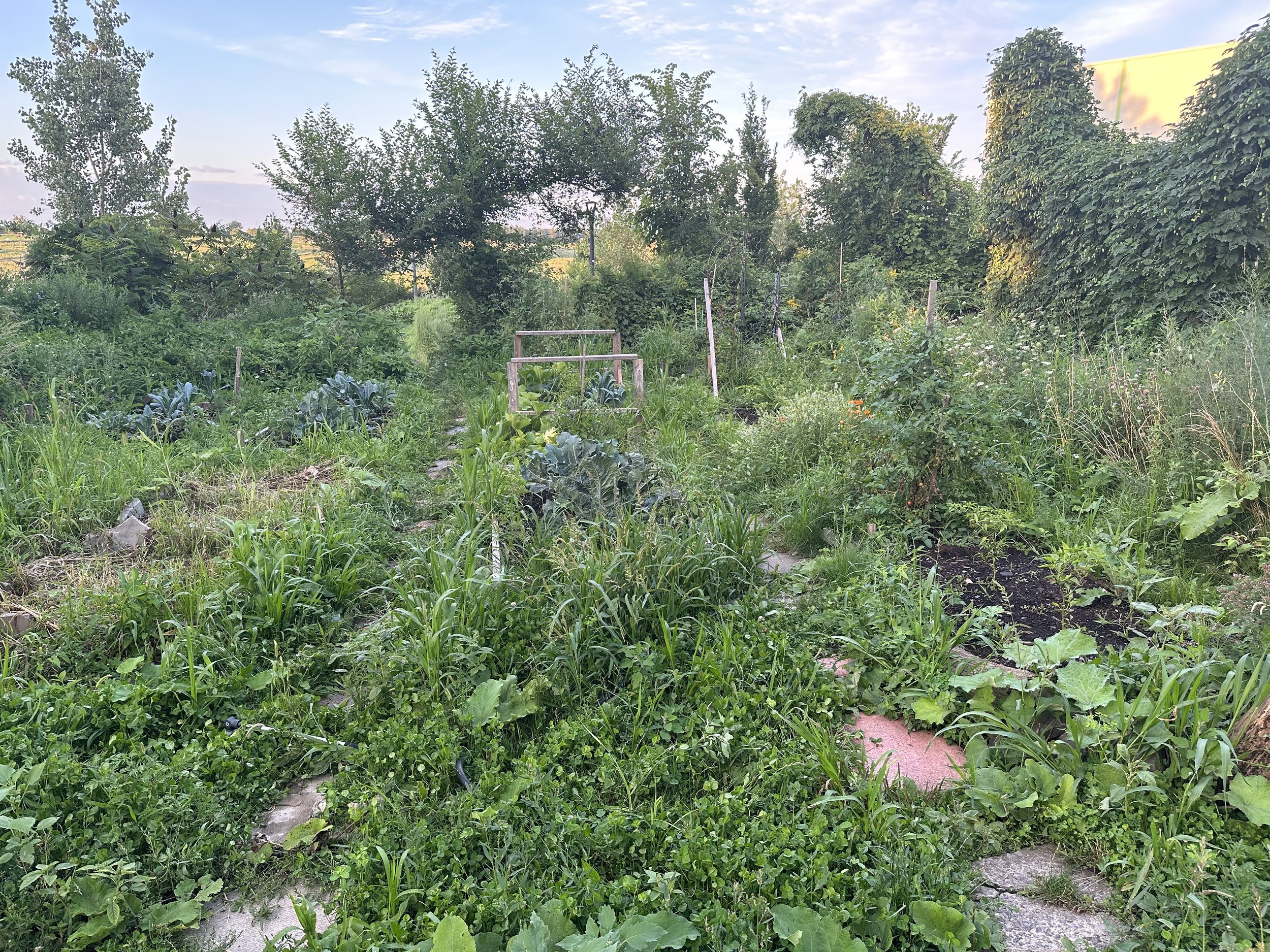Transnational Hip-Hop: Reflections of Haiti
This article is also published in French and Haitian Creole.
August 11, 1973 is not hip-hop’s date of birth. I don’t make this claim to diminish DJ Kool Herc’s artistic achievement at the legendary party he hosted that day in the South Bronx. Rather, my aim is to draw attention to hip-hop’s multiple and transnational origins, and, especially, its kinship with other Black artistic traditions that shape and reflect Black Urbanism.
As a Jersey Girl, New Yorker, and Black urbanist dedicated to a collective and participatory-art approach to the study of Black spaces and places, I employ ethnographic methods and street photography to document Black Urbanism experiences. Here, I share some of my work on the francophone “RapQuéb” hip-hop scene in Montréal, Québec.
Figure 1. Music video for Imposs’s “Légendaire” featuring Loud, White-B, Tizzo & Rymz. Produced by Banx & Ranx and Gary Wide. Joy Ride Records, 2000.
Transnational Black Urbanism
On 2020’s “Légendaire,” an ensemble rap record, Imposs begins “C'est nous les freakin' francophones de l'Amérique / On contrôle la ville, on est à la mairie” [We're the freakin' French-speaking people of the Americas / We control the city, we're at town hall]. These audacious lyrics reflect Imposs’s realities and aspirations as a first-generation Haitian-Canadian. More importantly, they announce “RapQuéb’s” transnational space-taking — representing not just Montréal, Quebec, and Canada, but all of the francophone Americas.
Figure 2. La Maison d’Haïti (LMdH) is a community-based cultural organization in the St. Michel neighborhood of Montréal. LMdH neighborhood center welcomes new arrivals with educational support and professional training — and Cafe Lakay (“Home Café” in Haitian Creole). Photograph by Sophonie Milande Joseph, 2023.
Imposs (Stanley Rimsky Salgado), like the other members of his group, Muzion, J’Kyll (Jenny Salgado) and Dramatik (Jocelyn Bruno), grew up in the Montréal borough of Villeray–Saint-Michel–Parc-Extension (VSP), a Black ethnic enclave with a large Haitian diaspora community. The group’s impact on the RapQuéb scene began more than two decades ago with their breakthrough album, Mentalité Moune Morne . . . (Ils n'ont pas compris) (1999). The LP offered a critical analysis of Black urban life in late twentieth-century North America, beginning with its title. It literally means “the mentality of sad people . . . (they don’t understand).” But for Muzion, “moune morne” is an empowering expression of the mentality of one who resists marginalization. It is a play on words that speaks to Muzion’s transnational roots: a faux amies translation, loaded with double entendre, of the Haitian Creole phrase mantalite moun mòn (mountain folks’ mentality) into the French mentalité des gens morne (sad people’s mentality), and a nod to proverbial descriptions of Haiti’s landscape as “beyond mountains, there are [more] mountains.” The album’s title also alludes to the source of Montréal’s name: Mount Royal hill. Although only 240 meters high and used mostly for its Mount-Royal Park (Parc du Mont-Royal), it is the highest point in the city and locals often affectionately refer to it as “The Mountain.”
Figure 3. View toward the center of Montréal from the city’s Mount-Royal Park. 2023.
Figure 4. Parc Frédéric-Back, Montréal. Photograph by Sophonie Milande Joseph, 2023.
For new transnational migrants, public spaces like parks often carry special meaning. In VSP, the closest and largest public space is Parc Frédéric-Back. A former quarry and site of environmental injustice, the city bought the site in 1988 for use as a landfill before deciding, in 1995, to turn it into a park. When complete, it will be one of Montréal’s largest parks, at 153 hectares. Some of Parc Frédéric-Back’s renovations have been led by the government. Much of the work, however, has been undertaken by community members, including Haitian-Canadians engaged in kitchen-table, citizen-led planning. It was neighbors, including a group now known as Projet 45, for instance, who created a do-it-yourself skatepark popular not just for its ramps but as a canvas for Black Urbanism, including graffiti and music. It is where local skaters and hip-hop artists layer their art to create photoshoots and videos to accompany new music and announce events. The community also took the lead on an adjacent community garden, whose produce gets barbequed as neighbors chat and skaters show off their skills.
The content created at, and inspired by, the park — including some of Muzion’s — constitutes a form of street anthropology and visual sociology that records the experiences and aspirations of Black ethnic enclaves. Muzion’s “la vi ti nèg” (the life of the little guy), for example, is a call-and-response for the Black immigrant community to gather to plan Black futures. The lyrics poetically document the struggles of lower-income, Black immigrant, ethnic enclave communities, including their resistance to oppression. Its music video depicts debates within the local Haitian diaspora and, through a montage of Black Urbanism, the realities of street life and community organizing in VSP and beyond.
Growing hundreds of miles away in New Jersey — in a mixture of Black urban areas and predominantly white suburbs — Muzion’s video reflected many of my own lived experiences as a first-generation Haitian-American. As a teenager, it also boggled my mind. Here were people who looked like me and spoke about familiar social justice concerns — but in another language.
A Community’s Origins: Trains & Jazz
Urban planning contexts help create conditions for Black art to flourish. To start, it was the construction of rail lines that helped give rise to Montréal’s first Black ethnic enclave, La Petite-Bourgogne (Little Burgundy). In 1836, public train service began running near the city. Little Burgundy grew around two railway stations and was heavily populated by Pullman car porters. From there, Montréal saw a growing concentration of transnational Black Urbanism and culture, initially in jazz and, in more recent decades, rap. From this perspective, we might locate hip-hop’s origins, at least in part, in the iron horse. Sadly, like many Black enclaves in North America, Little Burgundy was razed in the name of urban renewal beginning in the mid-1960s.
Figure 11. Namori Cissé is a singer, drummer, songwriter, and composer from Côte d’Ivoire based in Montréal. His music is influenced by reggae, rock, folk, and soul roots, and his fashion fuses global hip-hop styles, like in this remix of the flipped-backward hat and African print shirt. Here he plays Afro-jazz at La Petite Marche, Montréal. Photograph by Sophonie Milande Joseph, 2023.
Figure 12. On the evening of Cissé’s show, the street outside La Petite Marche was popping. Photograph by Sophonie Milande Joseph, 2023.
Reflective Practitioner
In 1955, Haitian architect and urbanist Albert Mangonès published a series of essays in the journal Reflets d’Haïti arguing for the use of planning to counter sprawl in Port-au-Prince, which was accelerating with rural-to-urban migration. He called, in particular, for creating an “urbanism” commission and for empowering members of the newly chartered professional body Association des Ingénieurs et Architectes Haïtiens (AIAH), which represented civil engineers, architects, and urban planners, to intervene.
Figure 13. Pétionville, Haiti, overtaken by sprawl from Port-au-Prince. With rapid rural-to-urban migration in the 20th century, architects like Albert Mangonès worked to contain urban growth but largely failed to. Photograph by a friend who wishes to remain anonymous, 2017.
Mangonès’s ideas — like other members of AIAH — were shaped by transnational educational, professional, and cultural networks. Mangonès had studied at the Académie Royale des Beaux-Arts in Brussels and, in 1942, graduated from Cornell University’s architecture program. Along the way, he encountered a variety of transnational Black Urbanism spaces, such as Renaissance-era Harlem, which inspired him. Mangonès was also an artist and advocated for the arts as a tool for improving urban life. In 1944, soon after returning to Haiti, he co-founded the Centre d'Art in Port-au-Prince, which went on to play a huge role in identifying and training artists in Haiti — and anticipated the ways in which cultural planning would, in more recent generations, become essential to community organizing. As the chorus of “la vi ti nèg” goes, “lavi a pa fasil, se pou sa nou rasanble” [life isn’t easy, that’s why we gather].
When François “Papa Doc” Duvalier came to power in Haiti in 1957, he followed Mangonès’s recommendations, setting up Urbanism Commissions. Unfortunately, the lack of democratic input — here and throughout Duvalier’s regime — resulted in a dictatorial era that sent waves of Haitian artists and professionals abroad, including to Montréal. The Haitian immigrants and their children who contributed to the rise of Québec hip-hop culture a generation later embodied the cultural turn. From the streets to the recording booth, artists like Muzion crossed geographic, cultural, and linguistic borders to connect the African diaspora via participatory art, transforming the Black Urbanism experience.
Reflecting Diaspora
When a community assembles, it begins to see reflections of itself. Historic Black ethnic enclaves such as Little Burgundy were created by early Afro-Canadian communities such as African Nova Scotians, Afro-Métis, Afro-Caribbeans, and transient Pullman porters from the United States. Today’s Black ethnic enclaves like VSP and Montréal-Nord, far from Little Burgundy, grew with subsequent waves of Afro-Caribbean and Continental African migration.
Many early Haitian immigrants, following the rise of Duvalier, were from the educated elite: doctors, academics, teachers, and other professionals. Among them was Frantz Voltaire. Voltaire first came to Montréal as a student but returned to Haiti after completing university. In the late 1970s, President Jean-Claude “Baby Doc” Duvalier, son of Papa Doc, jailed him. Voltaire moved permanently to Montreal in 1979.
In Canada, Voltaire built a reputation as a community-oriented scholar. As a professor at the Université du Québec à Montréal, he got the idea to create a center for films and publications — not only Haitian works but the work of other Afro-Caribbean and Afro-Canadian authors. From that idea emerged le Centre International de Documentation et d'Information Haïtienne, Caribéenne et Afro-canadienne (CIDIHCA). Now celebrating its fortieth anniversary, it has become an important Black Canadian institution for documenting, preserving, and disseminating Black Canadian urbanism knowledge.
Figure 14. Selfie of the author (left), Leslie Voltaire of CIDIHCA, and Abigail Moriah of Black Planning Project. Photograph by Sophonie Milande Joseph, 2023.
After Baby Doc came to power in 1971, there was a dramatic change in the volume and background of Haitian immigrants to Canada. From the early 1970s, this second wave were younger and less educated than those who had come in the 1960s, when many were highly educated professionals. Faced with discrimination and oppression, Haitian youth, students, and community leaders created organizations to respond to the Black community’s needs.
In 1972, La Maison d’Haïti (LMdH), a community-based cultural organization in Montréal, was founded with a focus on welcoming new arrivals and offering them educational support and professional training. A year later, le Centre N A Rive (CNAR): Centre d'alphabétisation et d'insertion sociale [The We'll Get There Center: A Center for Literacy and Social Inclusion] was set up, providing new arrivals with more essential programming. Many other Haitian, Caribbean, and/or Black Canadian cultural-planning and community-based organizations in Montréal today date from that moment.
Figure 15. The 15th annual Day of Haitian Books at CNAR, August 19, 2023. Photograph by Sophonie Milande Joseph.
Figure 16. My Planet, My Future was the theme for the annual International Day of Youth at LMdH, August 12, 2023. A youth group performs a musical skit to tell stories about the environment. At far right is Josué Corvil, city councilmember representing VSP. Photograph by Sophonie Milande Joseph.
#lehoodestfatigué (The Hood Is Tired)
If hip-hop wasn’t born on August 11, 1973 in the Bronx, when was it? Does it need a birthday? Perhaps not. Yet commemoration matters. DJ Kool Herc’s rec-room party has certainly impacted New York City’s cultural and physical landscape. Fifteen years ago, Herc worked with tenants of the building to buy it in an effort to rescue it from underfunding and neglect: the scourges of much privately built, publicly subsidized below-market housing built in the mid-twentieth century. More important, just two miles down the road, the new Hip Hop Museum, scheduled to open in 2025, is under construction. It represents heritage planning at its finest.
Figure 17. Selfie of Cash Boy Reg and the author. Photograph by Sophonie Milande Joseph, 2023.
Back in Montréal, in VSB, another node in the story of hip-hop, Haitian youth, students, and community leaders have pursued community development through incorporated, community-based organizations. But others chose street ethnography and artistic practice to wrestle with difficult planning and policy issues. By creating public art that records and broadcasts Black Urbanism experiences, RapQuéb’s transnational hip-hop culture — represented in the lyrics of Imposs, but also in the “hip-hop” comedy of Cash Boy Reg (Reggie Casimir, Jr.), who uses #lehoodestfatigué [the hood is tired] as a hashtag for his socially conscious art — reflects these community struggles.
Author’s note: This article was produced as part of New City Critics, a fellowship program of the Architectural League/Urban Omnibus and Urban Design Forum to empower new, fearless, and diverse voices to challenge the ways we understand, design, and develop our cities.
Citation
Sophonie Milande Joseph, “Transnational Hip-Hop: Reflections of Haiti,” PLATFORM, Nov. 13, 2023











